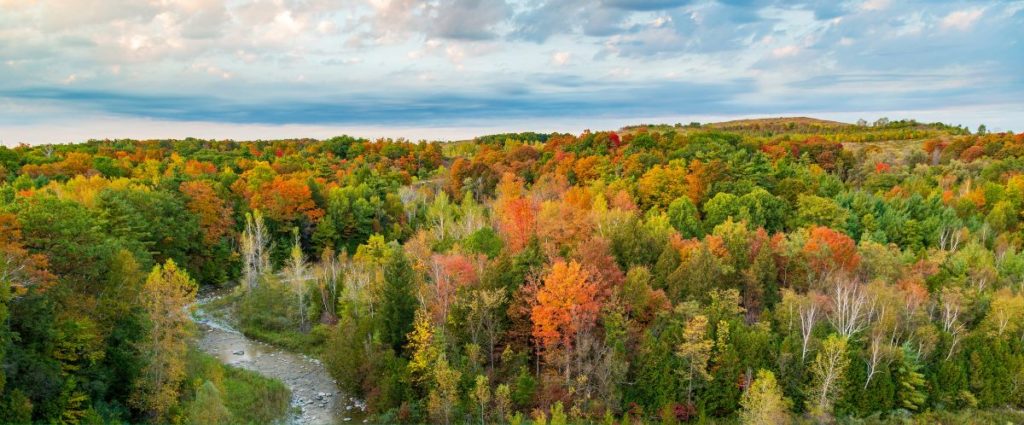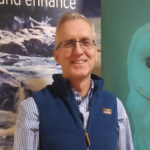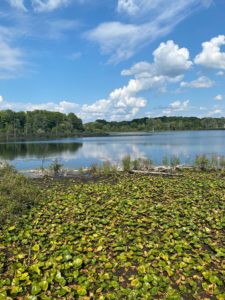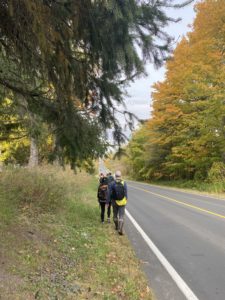
There are natural inflection points in the year. The first flowers. The first swim in a lake. First snow. Phenomena that portend radical change in the seasons. For the past few weeks, we have been witness to the most glorious displays of autumn splendour that I can remember. In these seasonal pivots, the beauties of nature become inescapable, even when most numb to the natural world, even in the midst of the city.
We are fortunate that our work at Wildlands League takes us into nature to shake off the shell of the artificial world and we are inspired to continue our work. We also get to see first-hand the ugly threats to nature and to share our experience and solutions.
Two main threats are increasing climate chaos and a grave loss of biodiversity. Southern Ontario contains both an incredible species diversity and Canada’s fastest-growing and largest urban population. Yet, barely 3 percent of the landscape is safeguarded by permanent legislated protection. It’s no surprise that the majority of Canada’s at-risk species cling to existence in imperilled habitat right here.
But we have a better vision. One that inspires us to get out and see for ourselves what nature still offers and the work to protect it. Those experiences help drive us to seek solutions.
In August we were able to take in a double feature of southern Ontario splendors. We toured London’s Environmentally Significant Areas including Medway Forest and Westminster ponds. We met with Carolinian Canada and are brainstorming how to help with the challenges faced by the plethora of unique species in the Thames watershed.
The next day we spoke at a townhall on the Ojibway National Urban Park after touring various Ojibway Prairie sites.
The importance of establishing and managing Ojibway as a full National Urban Park was underscored by the unanimous support of city council and the support of Caldwell First Nation for MP Brian Masse’s private members bill (PMB) to establish the Park.
Our executive director, Janet, hopes to testify at parliamentary environmental committee hearings in support of the PMB later to establish the park later in October. We support motions being introduced in Queen’s Park for Ontario to transfer Provincial Ojibway Prairie land to Parks Canada.
In early October, we organized a road ecology workshop, bringing together experts in the practice of mitigating the threats of roads and vehicles to species, looking at examples in Rouge National Urban Park. It was quite a contrast. Gorgeous colour, sparkling streams and the grim evidence of the lethal attraction of sun-warmed roads smack in the path of seasonal movement pathways. It is hard to revel in fall grandeur when you are peeling the remains of roadkill from the pavement.
But we also saw how special fencing can keep animals off the roads and direct them to culverts and bridges or specially designed ecopassages.
Our vision for biodiversity and buffering climate impacts comes from these experiences and the history of communities battling hard to preserve wild spaces from urban sprawl, extractive industries, and other unsustainable uses. We take hope in how some cities and governments seek to create more green infrastructure as a natural solution to climate change.
It is essential that we bring these efforts together and create interconnected Nature Networks in and around cities where we and most species at risk live; networks that are glued together by protection of remaining natural areas, enhanced restoration, creating more green infrastructure and ecological corridors and ecopassages. Rather than being isolated, a protected area like Rouge can be connected to the wider landscape and other parks so animals can roam safely. A flood-prone city like Windsor can have some relief from water logged homes and soggy basements.
Creating Nature Networks, is a model for how to successfully address the loss of nature and simultaneously buffer the impacts of climate change in our cities and near urban areas across Canada.
Next week, October 25th, we will join more than a dozen organizations and bring our vision and practical solutions to Parliament Hill in meeting with MPs from across the country. Each group will showcase how to protect near urban nature, specific to their locale.
Stay tuned for a fall mailing that further articulates and illustrates our Nature Networks vision for Southern Ontario.
As the leaves continue falling and we move to the seasons, we hope that you have opportunities to reconnect with and recharge in the natural world. May you be inspired to follow our efforts, supporting us where you are able.
To learn more about the Nature Connectivity Project, please visit our website.

Dave Pearce
Senior Forest Conservation Manager



